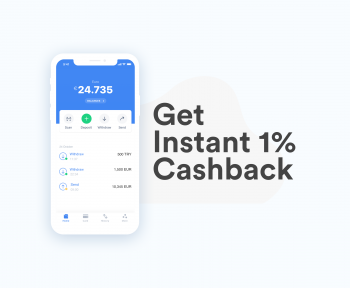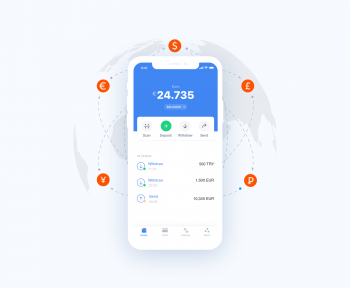Payments go way back. Even when there was no currency, we had trading as a form of payment to buy the stuff that we needed either for necessities or for pleasure. Then came the money, first coins, then paper. Now, we’re faced with more options than we can count whenever we look either online or in physical stores. So, what are the different payment options you could consider?
Indeed, you can pay even for fresh air these days. Need something urgently? Just rip your smart card out and off you go. Lost your smart card somewhere? Pay with your smart wallet!
Sometimes, however, it is hard to know which of thousands of new tools and options is the best choice for you because there really are that many of them. How does one know the best payment option for daily real-life use, you may wonder?
There is no need to worry! A majority of the most commonly used different payment options is known and researched. Before you research it, though, remember that we have prepared a superb guide that we will always be happy to assist you in figuring out different payment options these days. Here we go!
Identifying the Commonly Used Different Payment Options
1. Payments with Debit Cards
These types of cards allow you to withdraw money directly from your bank account to make your purchases. They are excellent for tracking how much money you spend and save as you do not need to carry money with you. Plus, there is a risk that they could be dangerous for thieves, nevertheless.
In order for a business to accept a debit card payment, it needs to have an online payment gateway for digital payments or a point-of-sale terminal for in-store transactions. Payment Card Industry Data Security Standards also require companies to have and maintain a safe environment for accepting and processing debit card payments, or PCI DSS.
To protect the data of cardholders and to furnish secure and dependable payment processing to businesses and consumers, the level of regulations and security rules is created to comply with the data.
2. Payments with Credit Cards
These types of payments allow you to purchase items regardless of whether or not you have the money since you can pay it in the future with a credit card. Since credit cards need to be correctly and effectively managed, potential debts may increase together with unwanted interest fees. A payment processor is what companies need to deal with to process credit card payments as they conduct the transaction.
They next require a merchant account, from which they can access and utilize the payment provided electronically. Similar to debit cards, a compliant PCI DSS is needed to cover sensitive data about the cards and to provide equal measures of confidence and protection to consumers and businesses alike throughout the process of making purchases.
3. Prepaid Cards
Cards which have a balance already loaded on them are known as prepaid cards in the books. As they provide an opportunity to control the amount of money spent and are not linked to one is bank account, they are also a good method to make payments. Since, again, however, you need to recharge them, you would have to…. PCI DSS also cover sensitive cardholder data to ensure their effect on the development.
4. Auto-Pay
Auto-pay is one of the most popular among different online payment options. Your card or bank account is automatically debited with payments using this method of payment. Even today, this is a highly recommended method of payment as the bills will always be paid in due course. However, you do need to make sure there is always enough money to debit the right amount or not forget to pay altogether that it does not happen on its own, following hefty debit or credit card bills.
5. Cash Money
Notwithstanding limited usefulness in online transactions and exposure to the risk of theft, many people still use cash for local purchases. It requires little adaptability from businesses as a payment method, but businesses still have to ensure that cash payday, processing security, and accounting are properly handled.
6. Cheques
As one of the oldest and most traditional means of payment, this transaction method lacks the speed of processing in most cases and entails the risk of checks not clearing. Since businesses still want to ensure payment transparency demonstrates delay in processing, and has other account freezing-related advantages banks can still accept checks.
7. BNPL Services
This option lets customers purchase goods on-the-go and make payments at an unspecified later time. While it allows freedom, it can easily become a source of overspending and debt, with late payment interest falling on the payer. Businesses usually have to collaborate with BNPL businesses and integrate their service payment options into a website.
8. Online Banking
The idea of moving money between accounts or making payments from bank accounts online is fairly straightforward. Its major limitation is that internet access and familiarity with the NetBanking system are traditionally required. The process can generally be done quickly and safely.
Businesses will have to set up accounts and link them to their payment gateways or websites to ensure a payment. Customers will also receive account credentials.
9. Mobile Payments
Mobile transactions are those that facilitate payments and the movement of funds. While the transaction necessitates an appropriate device and internet platform, it is usually quick and secure. Creating QR codes for mobile and official POS systems as payment schemes requires employees and compatible POS systems to be trained.
10. QR and UPI
This largely enhances the use of online payments based on QR codes. The two-dimensional code can be scanned by compatible UPI apps to instantaneously make payments or issue payments to other bank accounts. To build UPI IDs and QR codes, businesses are equally important to have customers scan the codes and balance them.
11. POS Terminals
Many retail outlets operate point-of-sale (POS) systems that enable clients to swipe their credit or debit cards to facilitate payment. While the technique demands the use of equipment and a reliable internet connection, it is quick and effective. In addition to payment processing packages, businesses have to invest in such POS terminals when they enable card payments at their physical facilities and comply with card payment standards.
12. Digital Wallets
Digital wallets securely store payment details such as credit or debit card information, helping to make fast and secure online payments. They are safe and convenient, but you also need to have the internet and proper apps for them.
Companies need to implement digital wallets as payment methods on their websites or POS systems so that users can successfully make payments on these systems.
13. Cryptocurrencies
The use of different cryptocurrencies, such as Bitcoin and Ethereum, for digital payments has become popular. These virtual or digital currencies are used through proper encryption. They provide anonymity, but on the other hand, they are governed by government laws and fluctuating prices.
Establishing a crypto-currency wallet, giving the access to the address of the wallet of the customers, implementing the payment gateways of crypto-currency and maintaining the rates of exchange and security are required steps of paying through cryptocurrencies. Moreover, changing legal changes in the area of law must also be included by the companies.



